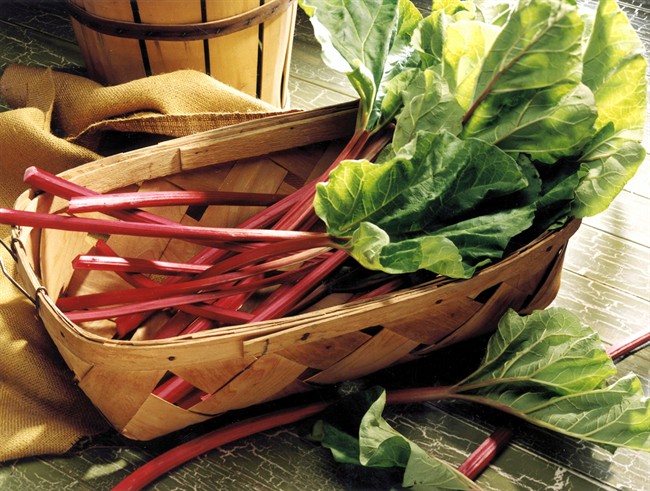TORONTO – With the snow barely off the ground in some parts of the country, consumers might be surprised to see rhubarb in some markets and grocery stores.

In Ontario, they can probably thank Bill French, who’s been working in the dark since mid-December to force the crop for people to enjoy ahead of field varieties.
The hot-house crop, one of the first local foods people can look forward to at this time of year, is very tender.
“When you’re baking with forced rhubarb in the wintertime you can cut the sugar in half because it’s not nearly as bitter,” French says.
Though rhubarb is used mostly in desserts and jams, it can also be added to chutney to be served with meat and on cheese sandwiches.
French, one of the largest growers of rhubarb in Ontario on his Lennox Farm, north of Shelburne, sells a small amount for use in the wine industry. He’s also had some interest from microbreweries experimenting with fruit-flavoured beers.
But rhubarb is actually a vegetable, says Elaine Roddy, vegetable crop specialist with the Ontario Ministry of Agriculture and Food.
“You’re eating the stem of the plant. Fruit refers to the fruiting bodies with seeds inside it. Botanically that’s what a fruit is, but colloquially in our language we tend to think of fruits as sweet and vegetables as savoury,” Roddy says from Ridgetown, Ont., southwest of London.
At one time, much of the field crop grown by French’s father and grandfather was processed. But that industry has moved offshore, which has eaten into the number of rhubarb growers in the province, Roddy says.
As well, the rising cost of heating fuel in the 1970s made it prohibitive to keep buildings warm enough to force the crop over the winter. Dozens of growers in Ontario moved on to other crops or retired, says French, 59.
“But I think the biggest reason it’s dwindled is people’s way of preparing food has changed a lot in the last 40 years,” he adds.
“People just go to the store now and they buy a pie already made. There’s not a huge population of people that make their own pies anymore, but it is coming back. We’ve noticed that trend in the last five years.”
French chooses vigorous varieties of rhubarb with strong roots that are grown in the field for two to three summers. The roots are dug up in the fall and put into a period of dormancy. Once the heat is turned on, the plants grow in the dark. In about six weeks, harvesting begins.
French times the bulk of the forced crop for spring, when people are eager to eat rhubarb.
Field-grown rhubarb usually comes in June.
“It fits nicely with strawberry season,” says Roddy. “I guess as much from a marketing standpoint but also from a crop production standpoint the two harvests are in sync with each other.”
Rhubarb is a source of calcium and 250 ml (one cup) of raw, diced rhubarb contains only 27 calories.
When buying rhubarb, look for firm, crisp stalks.
“You don’t want them wilted,” says Roddy.
“It’s kind of like celery that way. You want something that’s a little more firm that’s going to have a bit of crisp to it as you cook it down.”
Store it in the refrigerator in the crisper or a plastic bag and wash before using.
Avoid eating the leaves, which contain a potential toxin called oxalic acid.

Comments